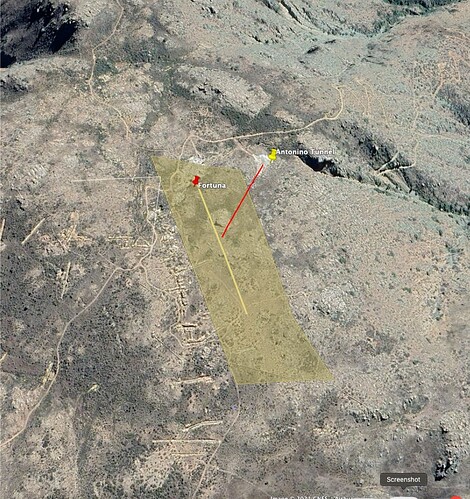In this image we have backed out a bit again. I have made a rough “sheet of plywood” gold colored “sheet” to represent the Don Luis vein. Bear with me, it is hard to represent 3D data in 2D with any accuracy.
You can see the trench marks to the left of the gold colored polygon. The polygon could go over to there but it would obscure the trenching. But that trenching is basically following the surface expression of the old Fortuna vein / Don Luis. Some of this trenching was done a long time ago but Auryn did a lot of it when they started working on the mountain. The polygon represents the vein, the sheet of plywood, at a tilted angle going down into the mountain.
The old Fortuna property report (Howe 1999) states that the veins here “strike between 300 deg and 340 deg and dip 40 deg to 50 deg to the northeast”. So you can imagine the “edge” of the plywood on the left as representing the first part. The “dip” means that sheet of plywood “tilts” 40 to 50 degrees compared to surface for some unknown distance. So you can see
1. The sheet dips over toward the new tunnel entrance bringing it closer to that new entrance as it continues down.
2. Since the Antonino entrance is around 100 feet lower than the original Fortuna entrance it means it is a logical spot to be much nearer to areas some 100 to 150 feet lower in the vein than the original Fortuna tunnel and workings…
Now combine this with the suspected improving higher grades of the vein with greater depth and that makes the new tunnel entrance a very logical place to start and it was logical to expect that they would not have to go too far to intersect the vein.
